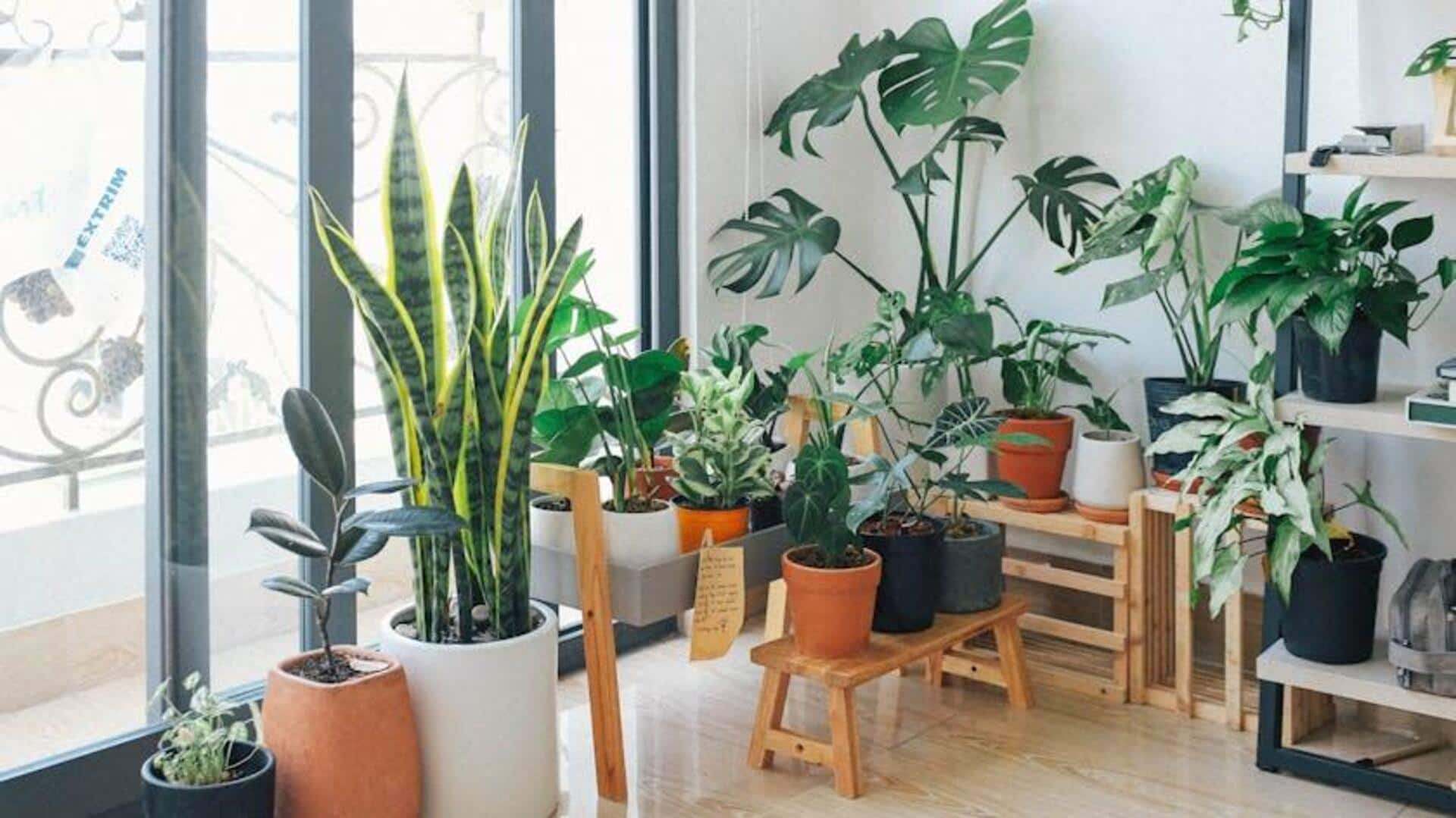
How to keep indoor plants healthy in dry climates
What's the story
Indoor plants can be difficult to keep in dry climates, where low humidity can cause wilting and poor growth. Keeping the right humidity is important for the plants' health as it impacts their ability to absorb water and nutrients. With a few simple strategies, you can create an environment that meets your plants' needs despite arid conditions. Here are some practical tips to keep your indoor garden flourishing despite dry climate challenges.
Drive 1
Use of humidifiers
Humidifiers work wonders for adding moisture to the air. They are available in different sizes and types, so you can easily find one that fits your space. Keep a humidifier next to your plants and they will get the required humidity throughout the day. This trick works especially well in winter months, when indoor heating systems tend to suck out moisture from the air.
Drive 2
Grouping plants together
Another tip is to group your plants together. Grouping plants together creates a microenvironment with higher humidity levels due to transpiration—the process by which plants release moisture into the air. By clustering several pots close together, you allow them to share this moisture. This action creates a more humid atmosphere around them naturally without additional equipment.
Drive 3
Pebble trays for added moisture
Pebble trays provide an easy way to increase humidity around single pots or small clusters of plants. Fill shallow trays with pebbles and pour water till just below their tops. Place plant pots on top so that they don't sit directly in water but benefit from the evaporating moisture rising from below. This way, you maintain the optimal conditions without over-watering roots.
Drive 4
Regular misting routine
Misting leaves regularly offers temporary respite from dryness, adding surface-level moisture where it's needed most urgently during hot spells or when other methods might not suffice alone. Ensure misting happens early morning or late afternoon so droplets evaporate before nightfall. Prevent fungal issues from developing overnight due to dampness lingering too long. Otherwise, potentially harmful consequences arise instead of the intended benefits.